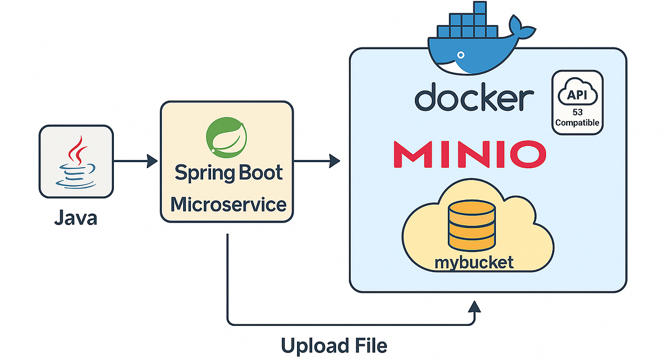Java
Javacodegeeks
45

Image Credit: Javacodegeeks
Java Currency Code Symbol Mapping Example
- In Java, you can map currency codes to symbols using the Currency and Locale classes for internationalization support.
- The Currency class provides the getSymbol() method to retrieve a currency's symbol based on a specified locale.
- You can use Currency.getInstance(currencyCode) to get the Currency object and then obtain the symbol using getSymbol(locale).
- Iterating through available currencies with getAvailableCurrencies(), you can map all ISO currency codes to symbols.
- For custom mapping, a hardcoded HashMap can link specific currency codes directly to their symbols.
- The hardcoded map approach allows full control over symbol display but requires manual updates for new currencies.
- The article also discusses using Java's built-in support and a custom solution for currency symbol mapping.
- Various Java code examples demonstrate different approaches to mapping currency codes to symbols.
- Mapping currency codes to symbols is vital for financial applications, e-commerce platforms, and localization.
- Understanding currency code to symbol mapping is essential for displaying accurate currency representation in Java.
Read Full Article
2 Likes
Medium
336

Image Credit: Medium
Design Patterns in Java: Real-World Examples You’ll Actually Understand
- Design patterns in Java are proven solutions that help developers organize code in a smart and reusable way, acting like blueprints or shortcuts that save time and make software more reliable.
- Five popular Java design patterns are discussed with simple real-life analogies, including Singleton, Factory, Observer, Strategy, and Decorator.
- Singleton ensures only one copy of something exists in a system, similar to a thermostat controlling the temperature in a house.
- Factory helps create different types of objects without users needing to know the details, like ordering a drink at a coffee shop.
- Observer allows one system to notify many others when something changes, similar to a group chat where messages are seen by everyone.
- Strategy enables software to switch between different ways of doing something without full rewrites, like choosing between food delivery or pickup.
- Decorator adds extra features to something without altering the original setup, such as adding gift wrapping to a package.
Read Full Article
20 Likes
Dev
404

Image Credit: Dev
Understanding compareTo() in Java: A Beginner's Guide
- The compareTo() method in Java is essential for comparing values, especially strings and objects, to determine their order in sorting operations.
- It compares two objects based on certain criteria and returns an integer result indicating whether one is greater, equal, or less than the other.
- Using compareTo() provides a more accurate comparison than basic operators like == or <, especially for complex data types, ensuring reliable sorting and filtering.
- Java String format complements compareTo() by helping to present comparison results clearly and professionally, enhancing the output readability for developers and users.
Read Full Article
24 Likes
Infoq
3.3k

Image Credit: Infoq
Adoption of the Model Context Protocol Within the Java Ecosystem
- The Java MCP Server Configuration Generator, created by Max Rydahl Andersen, allows developers to run Model Context Protocol (MCP) servers with JBang.
- Model Context Protocol (MCP), introduced in 2024, is an open standard for providing context to Large Language Models (LLMs).
- Companies like OpenAI, Google, and GitHub have announced support for MCP, enabling developers to integrate tools with LLMs.
- Java frameworks like LangChain4j, Quarkus, Spring AI, Model Context Protocol SDK, and JBang have recently announced support for the MCP.
Read Full Article
6 Likes
Discover more
Javacodegeeks
363

Image Credit: Javacodegeeks
Using Java Flight Recorder (JFR) in Quarkus
- Java Flight Recorder (JFR) is a profiling and diagnostics tool integrated into the JVM, now being used with cloud-native frameworks like Quarkus for monitoring and profiling Java applications.
- To setup JFR in Quarkus, add appropriate dependencies to your Maven project, ensure Java 11 or higher, and configure JVM parameters accordingly.
- Save JFR events by running the Quarkus app with recording options enabled, and open the .jfr file using JDK Mission Control for analysis.
- Custom events can be defined and emitted in a Quarkus application to capture specific behaviors, enhancing monitoring and profiling capabilities.
Read Full Article
21 Likes
Dev
295

Image Credit: Dev
Mastering Lambda Expressions, Functional Interfaces, and Streams in Java 8 and Beyond
- Java 8 introduced functional programming concepts through Lambda Expressions, Functional Interfaces, and the Streams API, promoting a more expressive, concise, and readable code.
- Functional programming treats functions as first-class citizens, emphasizing pure functions, immutability, and declarative constructs for data processing.
- Lambda Expressions are anonymous functions in Java that enable a clear and concise representation of method interfaces.
- Functional Interfaces have one abstract method and can include default or static methods, facilitating lambda expressions and found in the java.util.function package.
- Streams in Java are pipelines for data processing, supporting operations like filter, map, reduce, and collect without storing data itself.
- Common operations in Streams include filter, map, sorted, limit, and collect for various data processing tasks.
- Practical examples demonstrate how Streams can filter, transform, and process data efficiently, improving code readability and maintainability.
- Real-world use cases include filtering and transforming user data, event handling, sorting, and more, showcasing the versatility of Lambdas and Streams.
- Best practices involve keeping lambdas concise, using method references, avoiding side-effects, and using parallel streams judiciously for performance.
- Mastering these features empowers Java developers to write code that is more concise, expressive, thread-safe, and easier to maintain, ushering in the functional future of Java.
Read Full Article
17 Likes
Dev
246

Image Credit: Dev
Understanding SOLID Principles in Java (With Real life Examples)
- The article explores the SOLID principles of object-oriented programming, applied to a real-world online food ordering system.
- SOLID principles, consisting of Single Responsibility Principle, Open/Closed Principle, Liskov Substitution Principle, Interface Segregation Principle, and Dependency Inversion Principle, aid in developing robust, maintainable, and readable software.
- Examples in Java are illustrated for each principle, emphasizing their significance in software design and development.
- By understanding and implementing SOLID principles, developers can write cleaner, more scalable, and maintainable code for long-term success in their projects.
Read Full Article
14 Likes
Javacodegeeks
295

Image Credit: Javacodegeeks
Count Files Recursively in Java
- Working with file systems in Java often involves counting files recursively in a directory tree.
- Java provides various methods for this task, including traditional java.io.File and modern java.nio.file package.
- The goal is to navigate nested directories, differentiate files from folders, handle exceptions, and scale well.
- A traditional recursive method using java.io.File involves traversing the directory tree and incrementing a count for each file.
- The program checks directory validity, recursively counts files, and prints the total count using java.io.File.
- Java NIO's Files.walk() method introduced in Java 7 offers a modern approach to count files using a Stream of Paths.
- The FileCounterNIO program validates the directory path, filters out directories, and counts regular files using Files.walk().
- Files.walk() combined with Stream API provides a concise and efficient way to count files in a directory.
- The NIO approach is preferred for its readability, scalability, and performance advantages, especially in large directory structures.
- Both traditional recursive methods and modern NIO approach effectively solve the file-counting problem in Java.
Read Full Article
17 Likes
Medium
286

Image Credit: Medium
Build Your Own S3-Compatible Object Storage with MinIO and Java
- MinIO provides 80-90% of AWS S3 capabilities in a self-managed, developer-friendly way.
- Enterprises seeking data control and cost savings can leverage MinIO as a private cloud solution.
- MinIO offers features like auto-creating buckets, using Java for file uploads, and a contextual comparison with AWS S3.
- It is suitable for local development, air-gapped enterprise deployments, and AI/ML data pipelines, fully compatible with AWS S3 tools.
Read Full Article
17 Likes
Javacodegeeks
63

Image Credit: Javacodegeeks
Will WebAssembly Replace Java in Serverless Environments?
- WebAssembly (Wasm) excels in cold start performance with near-instant start compared to Java in serverless environments.
- Java's mature ecosystem and strong tooling make it the preferred choice for many enterprise applications over WebAssembly.
- Consider using WebAssembly for ultra-fast cold starts, lightweight workloads, and if you are using Rust, Go, or AssemblyScript.
- While WebAssembly is gaining traction in specific areas, Java will remain dominant for monolithic serverless apps, enterprise integrations, and long-running functions.
Read Full Article
3 Likes
Javacodegeeks
227

Image Credit: Javacodegeeks
Rust vs. Java: A Comparison for Android Development
- Rust offers better performance and memory safety over Java due to manual memory management and lack of garbage collection.
- Rust provides fine-grained control over memory, leading to faster performance and lower memory consumption compared to Java.
- For Android's core system components, Rust excels in low-level operations where performance is crucial.
- Java remains dominant for app-level development on Android due to its mature ecosystem and developer adoption.
- Despite Rust's growing role in Android, Java is deeply embedded in the platform, requiring smooth interoperability.
- Rust's FFI allows integration with Java through JNI bindings, enabling a hybrid approach for performance-critical components.
- Java's ecosystem maturity, developer familiarity, and cross-platform development dominance solidify its role in Android app development.
- While Rust and Java coexist, Rust handles systems tasks while Java focuses on app-level development for Android.
- Kotlin's growing importance in Android, especially with Jetpack Compose and KMM, complements Java and may benefit from Rust integration.
- Examples of Rust in Android include its use in AOSP for media frameworks and Google's exploration in Fuchsia OS, showcasing its potential.
Read Full Article
13 Likes
Dev
13

Image Credit: Dev
Mastering Java Memory Management: A Comprehensive Guide to JVM Internals, Garbage Collection, and Optimization
- Java's memory management system is crucial for performance and reliability, abstracting low-level memory operations and offering automated memory allocation and garbage collection.
- The Java Memory Model (JMM) defines how threads interact through memory, with main memory shared among threads and each thread having its working memory.
- JMM issues like stale reads and race conditions are handled using synchronization primitives like synchronized blocks, volatile variables, and happens-before relationships.
- Understanding JMM is essential for writing correct and thread-safe Java programs, avoiding concurrency pitfalls, and improving code consistency.
- The structure of JVM memory includes Heap (Young & Old Generation), Stack, Program Counter Register, Method Area (Metaspace), and Native Method Stack.
- Understanding JVM memory segmentation enables efficient resource management and optimizations like generational garbage collection and class-loading strategies.
- The object lifecycle from creation to disposal follows a pattern of allocation in Eden space, survival in Survivor spaces, and promotion to the Old Generation based on reachability.
- Garbage collection in Java automates memory reclamation, with strategies like generational garbage collection dividing the heap and optimizing memory usage.
- Types of Java garbage collectors like Serial, Parallel, CMS, G1, ZGC, and Shenandoah cater to different workload requirements, from simple to real-time applications.
- Tuning JVM memory parameters (heap sizes, generation ratios, collector algorithms) is crucial for optimizing performance, throughput, and latency.
- Memory leaks in Java can occur despite garbage collection, often due to static fields, event listeners, thread-local variables, or leaking classloaders.
Read Full Article
Like
Dev
405

Image Credit: Dev
Unlocking the Power of toString() in Java: Are You Using It Right?
- The toString() method in Java is essential for debugging, logging, and code readability.
- A well-implemented toString() helps transform objects into human-readable strings for better understanding.
- Balancing detail, security, and performance is crucial when deciding what to include in toString().
- Share your approaches, experiences, and best practices regarding toString() usage in Java projects.
Read Full Article
24 Likes
Infoq
31

Image Credit: Infoq
Java News Roundup: OpenJDK JEP Updates, Spring AI, Quarkus, LangChain4j, JReleaser, WildFly
- This Java roundup features updates on several JEPs targeting JDK 25, including Compact Source Files and Instance Main Methods, Module Import Declarations, Flexible Constructor Bodies, and Structured Concurrency.
- The eighth milestone release of Spring AI 1.0.0 introduces significant changes leading up to the upcoming RC1 release, focusing on providing deprecated API and corresponding replacement APIs.
- Quarkus 3.22.0 introduces new features like Compose Dev Services for Quarkus applications and an improved test class loading infrastructure.
- The first release candidate of LangChain4j 1.0.0 offers five modules under release candidate status, with breaking changes such as interface renaming and reshuffling.
- JReleaser 1.18.0 is released with new features like support for Forgejo, FLAT_BINARY distributions, and deployment to Sonatype Nexus 3 repository manager.
- WildFly recently joined the Commonhaus Foundation, a non-profit organization aiming to support the sustainability of open source projects including WildFly, Infinispan, Debezium, and others.
- JDK 25's build 21 early-access build includes various bug fixes, and developers are encouraged to report bugs via the Java Bug Database for further improvements.
- Spring Cloud 2025.0.0's first release candidate, Northfields, includes bug fixes and updates to sub-projects like Spring Cloud Kubernetes and Spring Cloud Stream.
- JEP 517 elevates HTTP/3 support for the HTTP Client API to Candidate status, proposing compatibility with the HTTP/3 protocol for easier interaction with HTTP/3 servers.
- JEP 515 elevates Ahead-of-Time Method Profiling to Candidate status, aiming to enhance application warmup time by making method-execution profiles instantly available to the HotSpot JVM upon startup.
- JEP 470's PEM Encodings of Cryptographic Objects moves to Candidate status, previewing an API for encoding cryptographic objects into the PEM transport format, allowing seamless conversions between PEM text and cryptographic objects.
Read Full Article
1 Like
Dzone
4

Image Credit: Dzone
Java Virtual Threads and Scaling
- Java Virtual Threads were introduced in JDK 19 as a preview feature as part of Project Loom, fully supported starting from JDK 21.
- They simplify concurrent programming, translating blocking operations into non-blocking operations.
- In traditional threading model, each Java thread maps to an OS thread, causing context switching overhead.
- Java Virtual Threading uses carrier threads backed by OS threads, reducing context switching at the OS level.
- When CPU-bound workloads are processed, virtual threads fully utilize CPU cores, enhancing performance.
- Context switching overhead is reduced, providing predictable performance, better CPU utilization, and scalability.
- Comparisons between thread pool and virtual thread execution times show faster processing with virtual threads in various scenarios.
- Virtual threads simplify development by offering a straightforward, synchronous style with improved observability and performance.
Read Full Article
Like
For uninterrupted reading, download the app